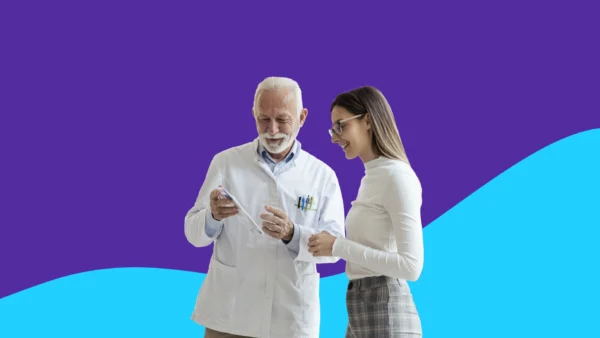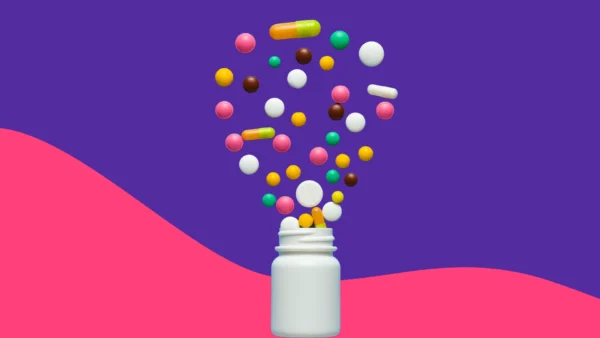As pharmacist roles continue to expand, the pharmacist-provider relationship has become more important to improve and maintain. However, barriers in communication can hinder a functional relationship. Pharmacists are often on the frontlines with patients and can act as a bridge between physicians and patient care. By working in healthy collaboration with physicians, pharmacists can help drive optimal patient outcomes.
Pharmacists are a vital resource on healthcare teams with their extensive knowledge of medication therapy. Sometimes, problems can arise if prescribing providers feel threatened or undermined by pharmacist recommendations. Handling objections and discussions with doctors, physician assistants, and nurse practitioners is an important skill that pharmacists can learn to ensure they are providing patients with the right treatments they need.
The current state of collaborative care
Pharmacists’ roles are continuing to expand as they are becoming an integral part of patient care. Pharmacists can provide medication therapy management services, handle routine vaccinations, and even hold regular screenings or consultations for chronic conditions, such as high blood pressure and diabetes. These expanded roles may sometimes overlap with the roles of physicians.
Pharmacists are in an optimal position to help drive positive patient outcomes with their services. Patients may find that pharmacists are more accessible than physicians for health and medication issues, and they may interact with pharmacists more than physicians at a cheaper cost.
Traditionally, pharmacists have been responsible for verifying and dispensing prescription drugs. For that reason, some physicians may be unaware of the full scope of pharmacist capabilities. Still, some physicians work closely with pharmacists in primary care or ambulatory settings, and many healthcare providers are finding that pharmacists can help relieve the burden of certain duties.
4 ways to improve doctor-pharmacist relations
Clarifying pharmacist roles is key to ensuring physicians don’t feel they’re being encroached on. Reports suggest that a collaborative pharmacist-doctor relationship increases patient satisfaction with their care.
1. Open the lines of communication
Patients often come directly to the pharmacy to pick up their prescriptions after a doctor’s visit. At this time, especially with new prescriptions, pharmacists may spot discrepancies in treatment, potential drug interactions, and possible issues with medication. In some cases, it can be difficult to get a hold of the prescribing physician, causing the pharmacist to have to use their judgment on how to dispense the drug in question.
Try to come up with a system with the provider beforehand to promptly discuss any issues that arise. Pharmacists that work in a hospital or clinic are often in close contact with physicians, and they can easily make notes on the patient chart or message and call the physician. Meeting regularly face-to-face to go over any issues is a good idea to keep communication open. Meeting regularly also allows you to build rapport with the physician to reduce the chances of any tension or resistance.
2. Clarify and educate on specific roles
Some problems and misunderstandings can arise because physicians simply don’t know what pharmacists are able to do. Interact with providers regularly and hold discussions or meetings that clarify specific roles and updates in care. For example, pharmacists can hold a discussion or seminar on medication therapy management for providers. You might also attend a seminar hosted by physicians on disease management and specific patient care issues. Attending these discussions can allow pharmacists to interact with physicians more consistently.
3. Don’t take things personally
In some cases, you may have to deal with a resistant or upset doctor. They may take it personally or feel that you are overstepping your role as a pharmacist. In those cases, if you have a legitimate treatment concern, you should stay level-headed and logical in your argument.
Present the basis of your argument clearly with supporting evidence as needed. If the doctor doesn’t budge, you can use your clinical judgment and refuse to fill a prescription that you’re uncomfortable with. At the end of the day, you should come to terms with not getting along with all doctors, so don’t take it personally. In many cases, doctors are willing to listen and are often happy that you discovered a treatment issue they may have overlooked.
4. The patient comes first
Pharmacists, doctors, and all healthcare professionals have a mutual goal of providing excellent patient care. No matter what issues arise while interacting with doctors or other healthcare professionals, always remember that the patient comes first. If you feel that a physician is acting immorally or negligently, you don’t have to feel obligated to approve and dispense a prescription. If a patient’s safety may be at risk, you should report the prescribing physician to their designated medical board. Never feel pressured or disheartened by a physician who is acting unprofessionally.
RELATED: How pharmacy technicians can go above and beyond for their customers
Bottom line
Pharmacists are in an ideal position to treat patients and are already being integrated into healthcare teams in clinics, hospitals, and similar settings. A more collaborative care model allows pharmacists to reduce the patient burden on doctors through increase communication. Patients may also prefer to discuss health issues with pharmacists due to ease of access. Although the roles of pharmacists and doctors can overlap, collaborating with doctors effectively is something all pharmacists should learn and strive toward.











